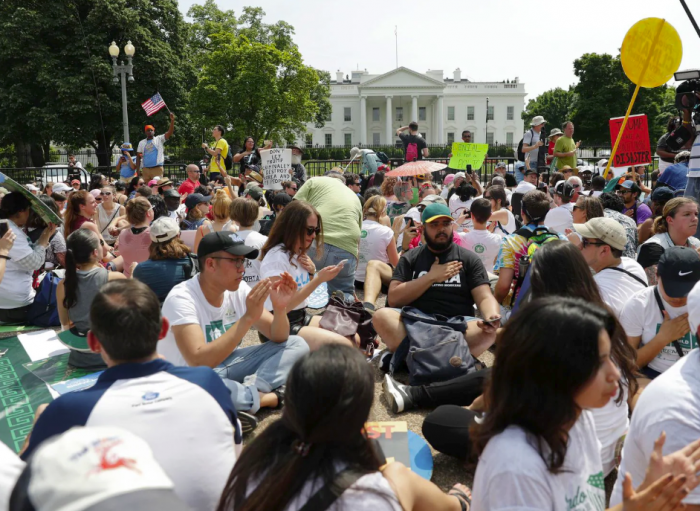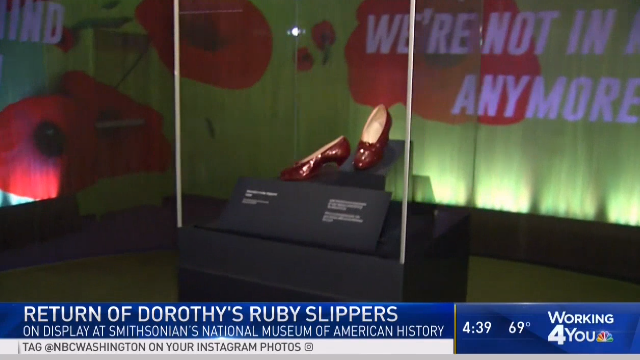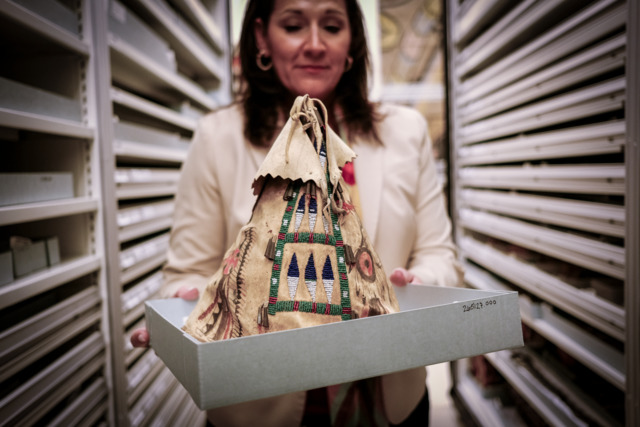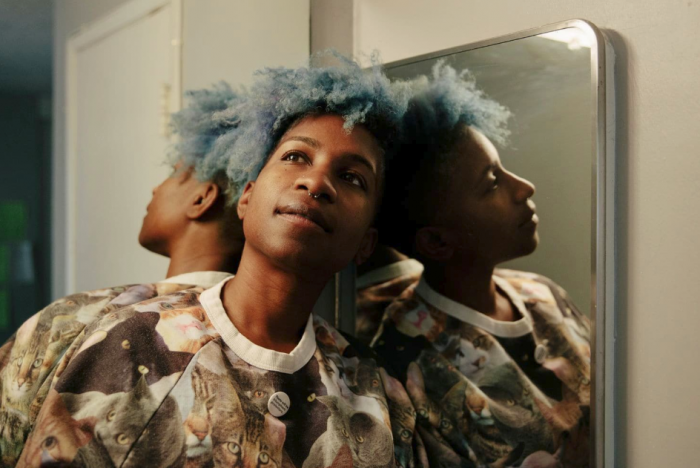ICYMI: Highlights from the week that was Oct. 14 – Oct. 20, 2018
No one can keep up with everything, so let us do it for you. We’ll gather the top Smithsonian stories from across the country and around the world each week so you’ll never be at a loss for conversation around the water cooler.
With all the shouting in the news, we were happy to listen this week to the voices of those who do not always have a platform in our culture.

National Zoo’s baby gorilla, Moke, turns 6 months old
He is developing well, zookeepers say, and they have lots of pictures and video to show off.
The Washington Post, October 15

Moke, the National Zoo’s baby gorilla, turned 6 months old on Monday. (Courtesy of the Smithsonian National Zoo)
The biggest milestone for Moke is that he’s taken his first steps alone out in the yard — away from his mother, Calaya.
Zookeepers shared on the zoo’s blog how he recently “stuck close by her side, at times touching Calaya’s hand, as he stood up, walked around, foraged and sat down.” It is a sign, zoo experts said, that his confidence is growing, and they called his progress “amazing,” given that he’s just 6 months old. Read more from Dana Hedgepath for the Washington Post.
Pressure builds as National Park Service considers proposals to change how protests are done in D.C.
The Washington Post, October 15

Demonstrators sit on the ground along Pennsylvania Avenue in front of the White House on April 29, 2017. (Pablo Martinez Monsivais/AP)
On the final day that the National Park Service was accepting input on more than a dozen policy changes to alter how and where protests are conducted in the District, Del. Eleanor Holmes Norton (D-D.C.) issued a warning to the federal agency: Reject the proposals — or else.
If the proposals are approved, she said, Congress and the federal courts will work to dismantle them. Read more from Marissa J. Lang for the Washington Post.
Ruby Slippers to Go Back on Display at Museum of American History
The size 5 shoes worn by Judy Garland were donated to the Smithsonian in 1979 and have been one of the museum’s most popular artifacts
WNBC4-Washington, October 17

There’s no place like home — especially for Dorothy’s ruby slippers.
The iconic sequin-covered slippers from the 1939 film “The Wizard of Oz” will be back on display at the Smithsonian National Museum of American History Friday, the museum says.
The size 5 shoes worn by actress Judy Garland were donated to the Smithsonian anonymously in 1979 after being sold at auction in 1970.
During their time at the museum, the color on the shoes faded significantly from exposure to light and moisture, and some of the sequins lost their red plastic coating. Read more from Erica Jones for NBC4 and watch the video clip.
How the Smithsonian Is Reuniting Thousands of Human Remains with Indigenous Communities
The institution’s two repatriation offices are unraveling answers to the question of who owns the past.
Washington City Paper, October 18

Jackie Swift (Photo by Darrow Montgomery)
An Army doctor snatched wool leggings from Sitting Bull’s body and stole a lock of his hair after he died in 1890. He gave his loot to the Smithsonian, and it ended up with the National Museum of Natural History, where it stayed for well over a century until, in 2007, the Smithsonian returned the leggings and hair to a descendant of the Native American leader.
Strolling through the National Museum of Natural History and the National Museum of the American Indian, both on the Mall in D.C., it is plain that the Smithsonian is home to thousands upon thousands of the most precious items and sacred treasures in the world. But to whom do they really belong?
The Smithsonian’s two repatriation offices are currently trying to figure that out, piece by piece. One office is at Natural History, and the other is at the American Indian museum. Read more from Kayla Randall for The Washington City Paper.
Smithsonian’s new film festival offers opportunity — and hope — to filmmakers of color
The Washington Post, October 18

Tchaiko Omawale’s debut feature film, “Solace,” is one of 15 works selected for competition at this year’s festival. (Brinson Banks) (Brinson+Banks)
While growing up in Northeast D.C., filmmaker AJ McClenon would spend hours taking photographs and creating art. For her, these projects weren’t just hobbies. They were her way of coping with life.
“My anxiety was difficult to manage,” says McClenon, 32. “If I was too anxious to make it to therapy, at least I could do something creative, which helped me.”
After graduating from high school, McClenon enrolled in The New School in New York City before transferring to the University of Maryland, closer to home, to study sculpture. There, she got into film through an independent study program and began making videos. Producing and showcasing her work provided a cathartic outlet for McClenon. Read more from Stephanie Williams and Kristen Page-Kirby for Washington Post Express.
Matthew Shepard’s Personal Objects Will Be Donated To The Smithsonian
Huffington Post, October 20 (via AP)

Matthew Shepard’s 1998 murder sparked national outrage and turned his death into a symbol of violence against LGBTQ people. (Photo by Steve Liss via Getty Images)
A collection of Matthew Shepard’s papers and personal objects will be donated to the Smithsonian’s National Museum of American History.
A news release from the Smithsonian says the museum will accept the donation from Shepard’s parents, Judy and Dennis Shepard, in Washington on Oct. 25.
KTWO-AM in Casper reports that the family is donating personal papers highlighting Matthew’s school life from elementary school through college as well as theater scripts, photographs, correspondence and notebooks. There are also items such as a child-sized Superman cape, sandals and purple ribbon award.
The 21-year-old Shepard died after being savagely beaten and left tied to a rail fence in October 1998 in Laramie. His murder sparked national outrage and turned his death into a symbol of violence against gay people. Read more from The Huffington Post.
Posted: 29 October 2018








